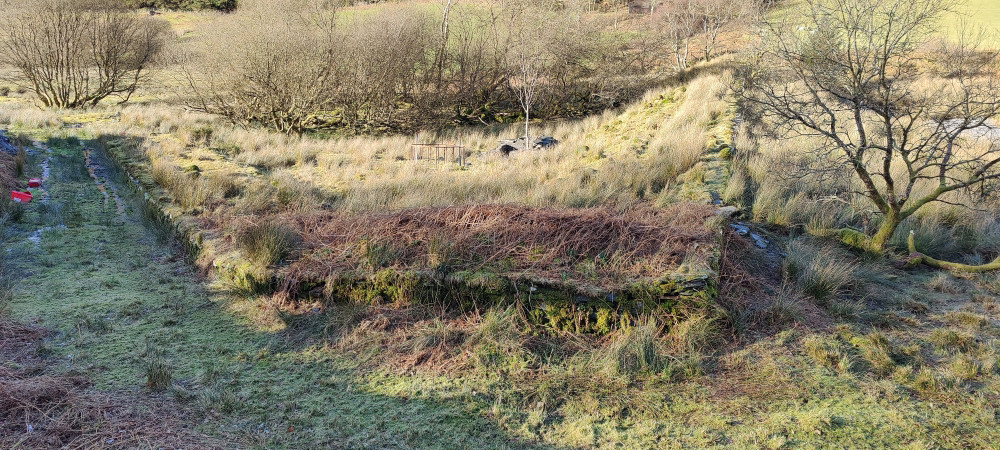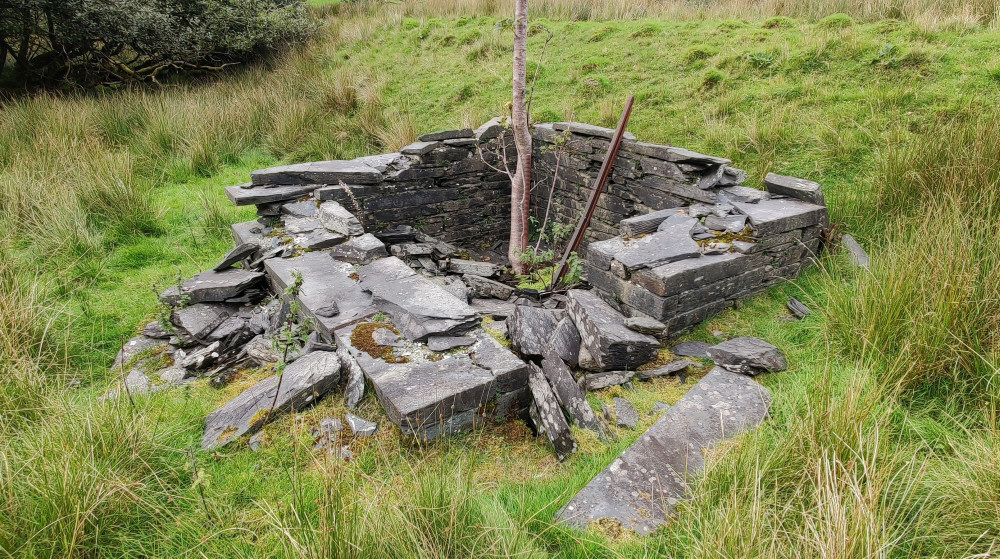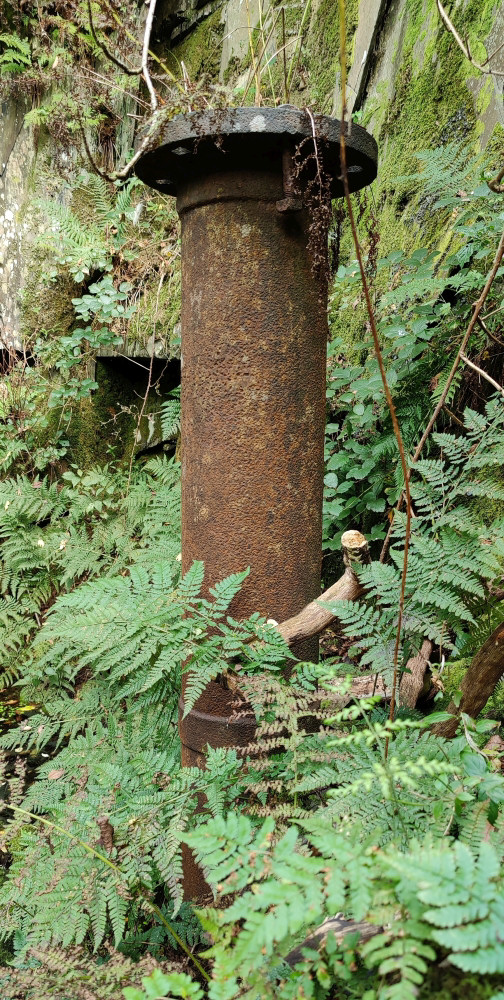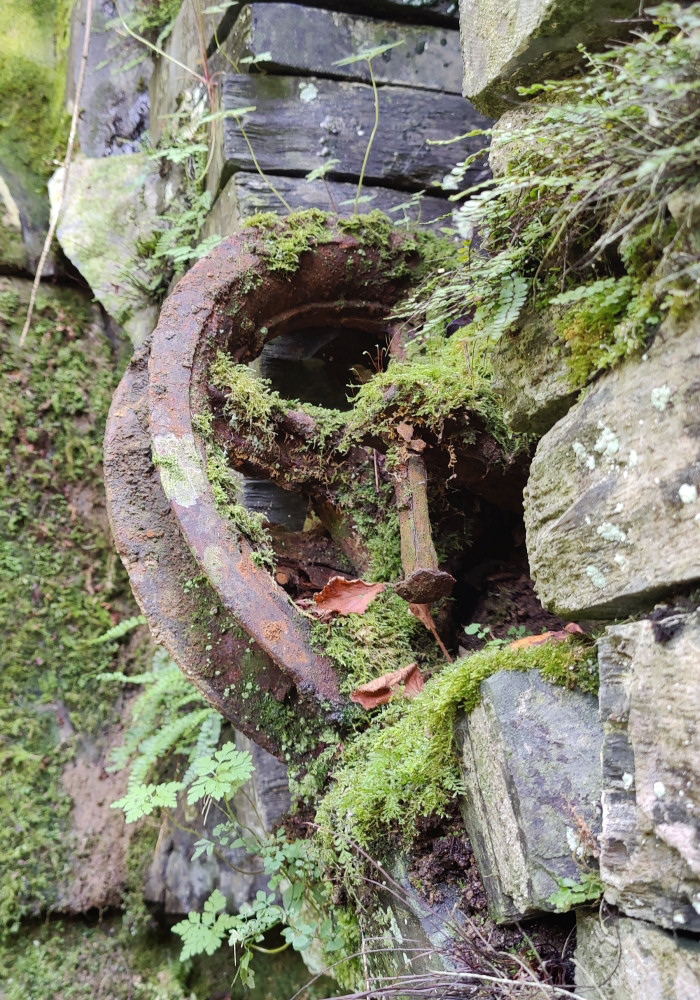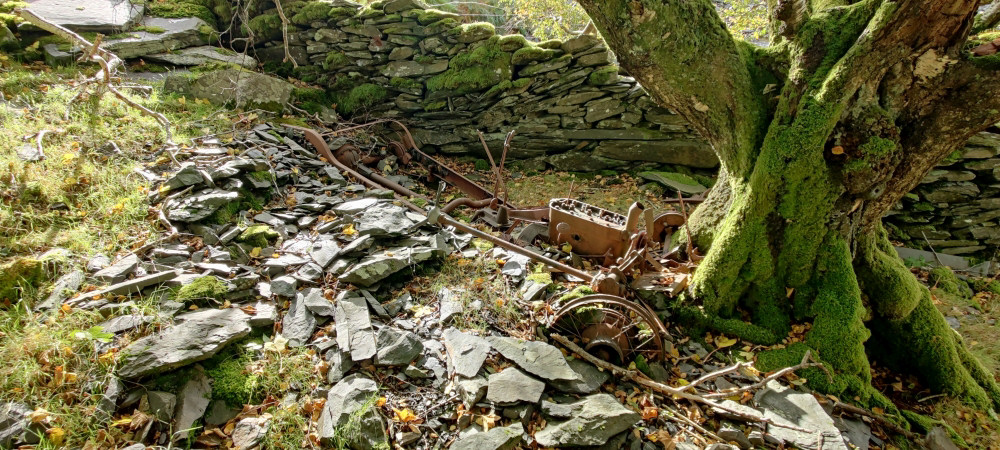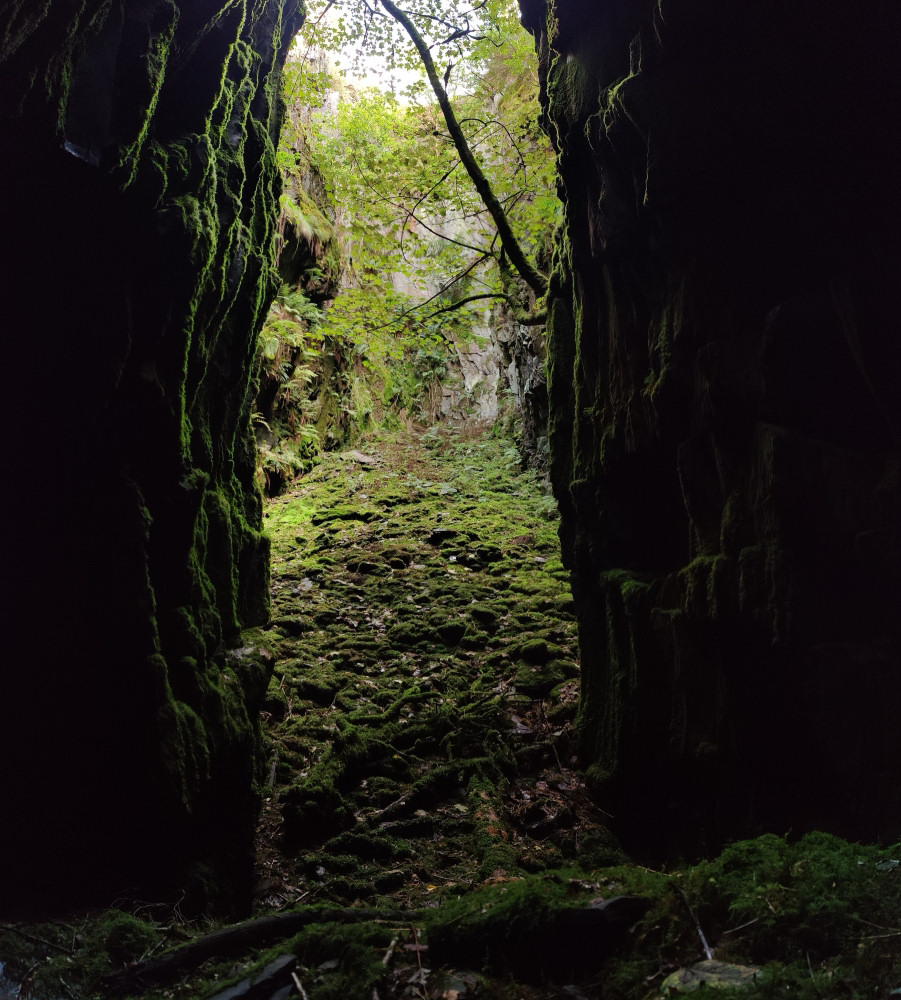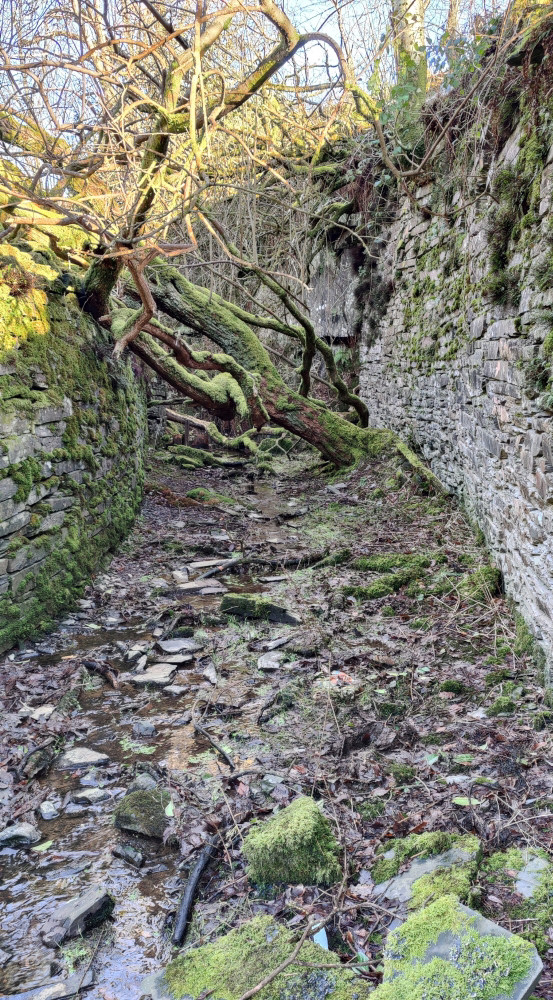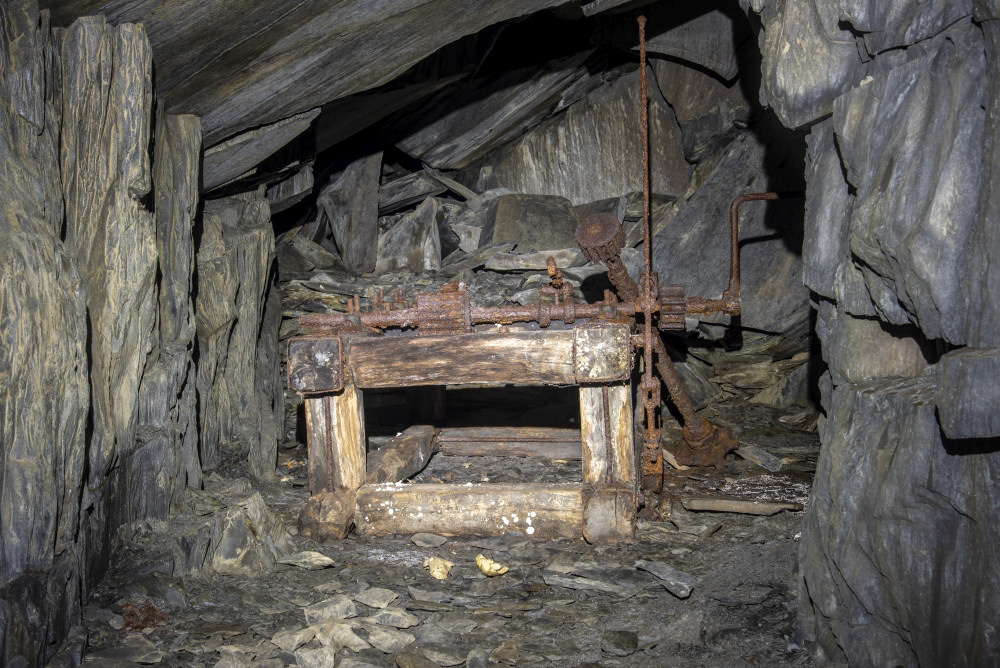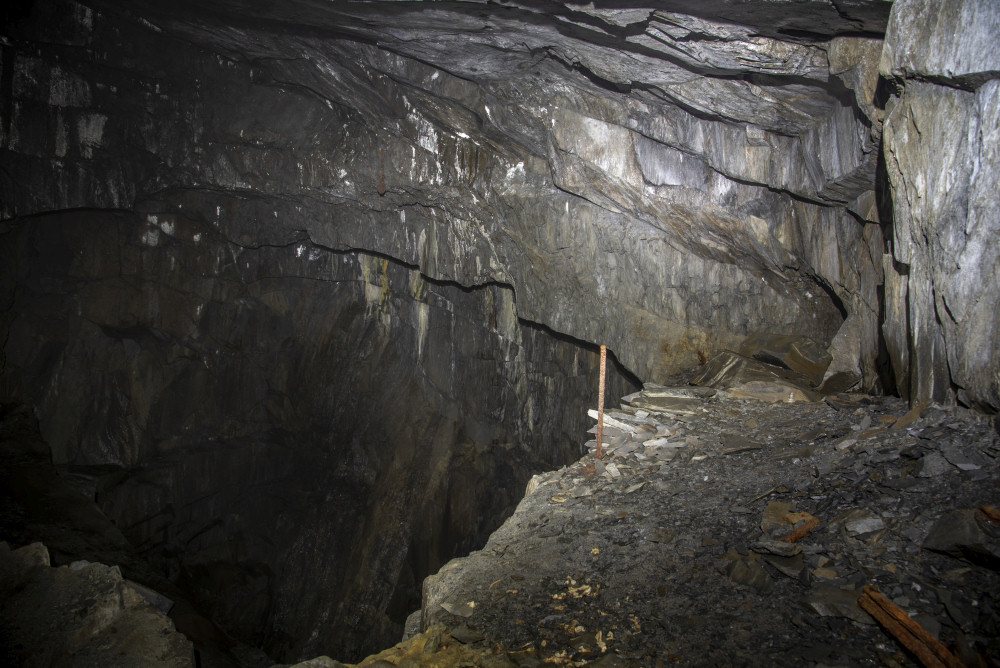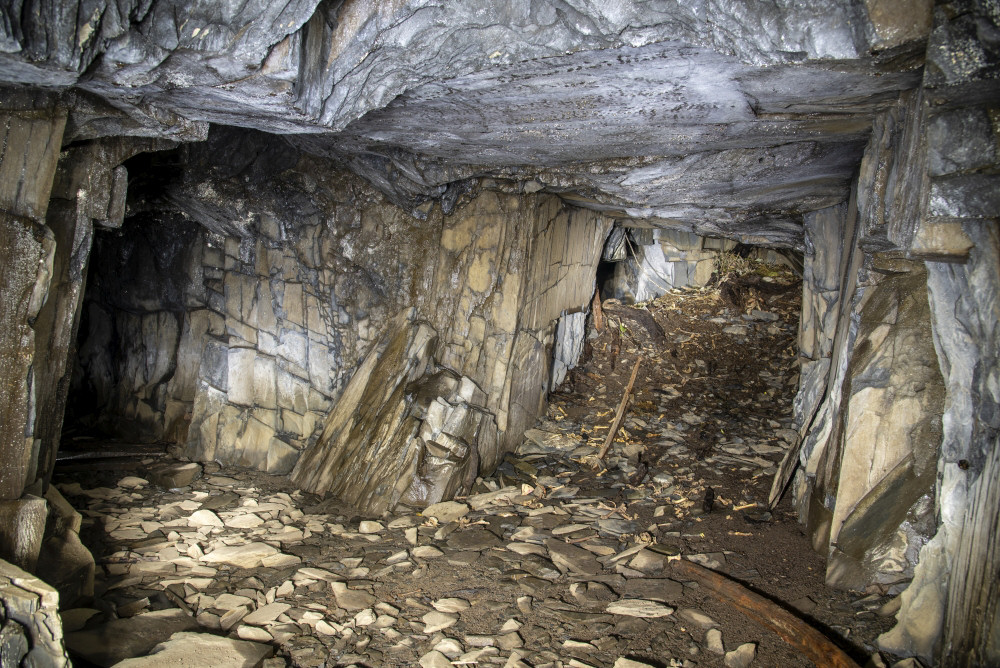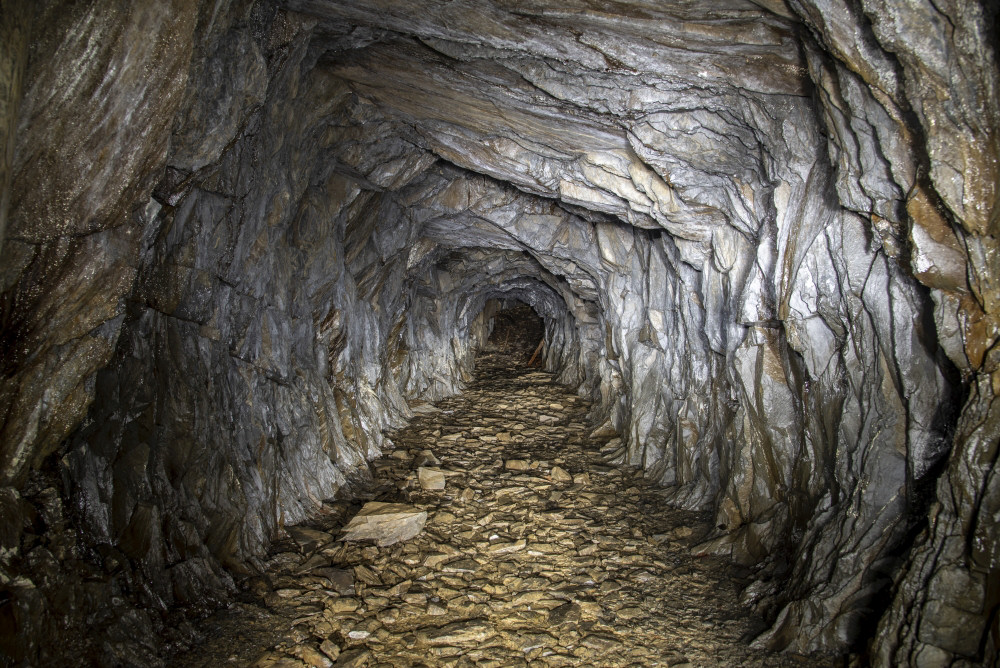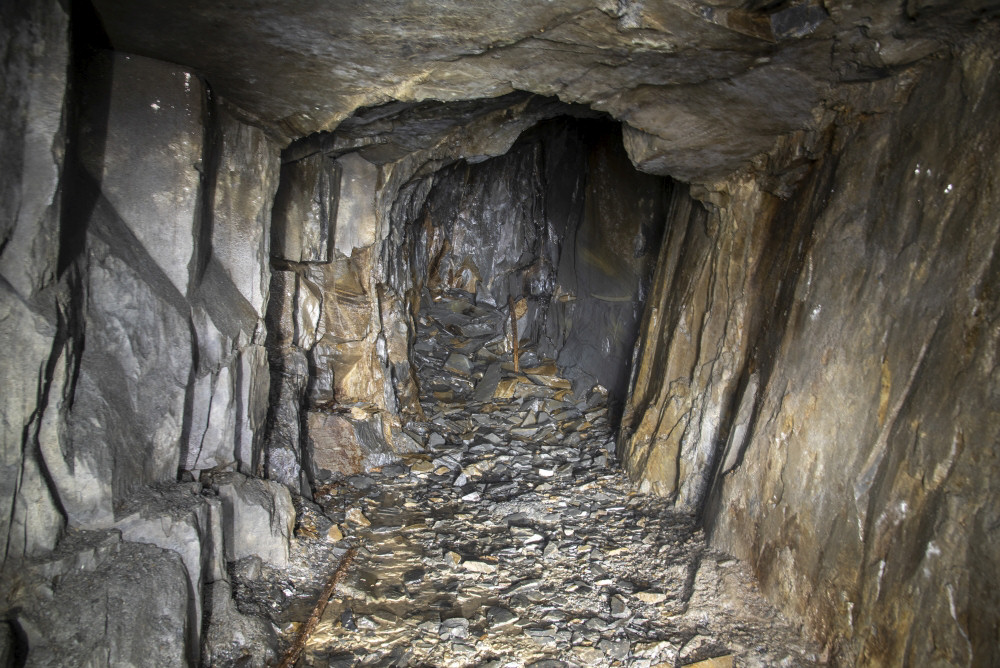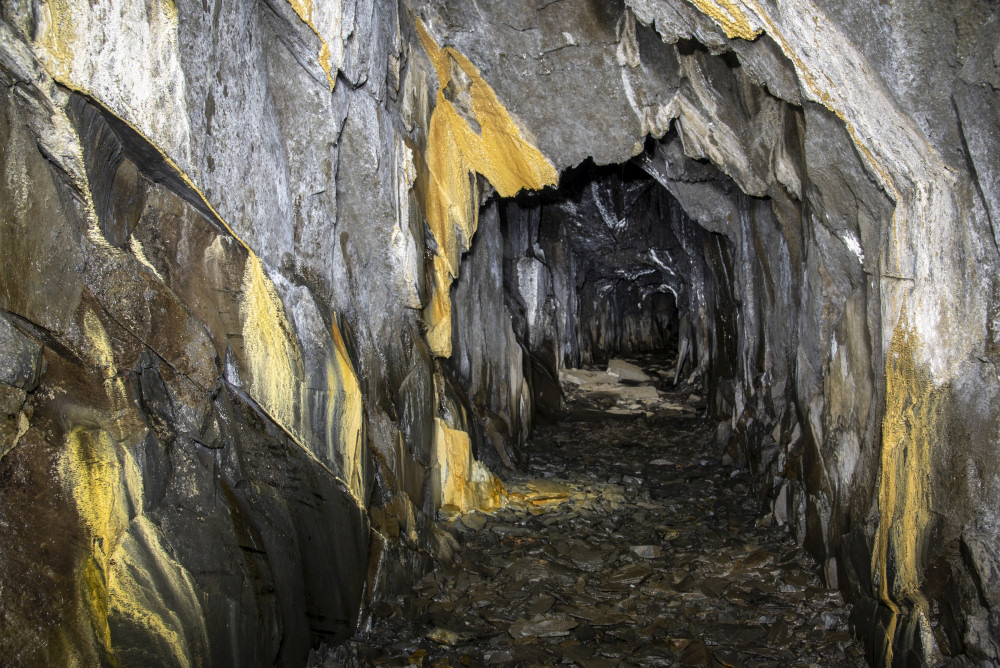Visitors approaching Cymerau typically first notice the extensive slate waste tipping along the Nant Ceiswyn, just above its junction with the Afon Dulas. The mix of slab and mill waste may puzzle some, as it’s not immediately clear why so much spoil accumulated here.
Following the Ratgoed Tramway north, one encounters farm buildings and a row of four former workers’ cottages. Some of these farm structures still include remnants of the original quarry mill, though much of it has disappeared due to agricultural redevelopment in recent years.
Crossing the river reveals the flooded entrance to underground workings. Near the incline’s base are visible remains of quarry infrastructure, such as an angle bob, pulley, and a rising main. Further along, parts of the old leat (which once powered the waterwheel pump) can be seen, followed by trial workings on the hillside.
The second working area, higher up the hill, includes an incline used to move waste, which was tipped both on the hillside and below the incline itself. The dam that once fed water to the Pelton wheel still exists, though breached, along with its wide spillway and buried penstock sluice.
Cymerau Quarry began operations in 1867 and remained under the same ownership as its larger neighbour, Alltgoed (later known as Ratgoed), for most of its working life. Early activity focused on a narrow vein to the south, accessed via a short adit that led to five chambers located below the water table. These chambers required constant pumping.
From the late 1870s, a second major area of the quarry was developed. Like many slate quarries, Cymerau experienced intermittent operations depending on slate market conditions. It finally closed in 1946, at the same time as Ratgoed.
During its operation, Cymerau used the Ratgoed Tramway to transport slate to the Corris Railway. Finished slate traveled downhill to the tramway by gravity, while ponies hauled empty wagons back up. Notably, Cymerau used its own wagons and ponies, separate from Ratgoed’s.
Although production volumes were never high, the quarry was known for producing excellent quality slate. The mill at Cymerau was powered by a Pelton wheel until 1936, after which slate processing was mostly done at Groeslon, who had acquired the quarry. Signs of saw-cut stone and side tipping near the lower incline suggest a portable saw was used in the final years.
Publications (4)
- (1991); CATMHS - Newsletter 031-November; 31 pages
- (1995); CATMHS - Newsletter 043-July; 48 pages
- Eade, Sara (2010); Ratgoed A Study In Slate. pp.17-22. Sara Eade. ISBN: 9780956565204
- Richards, Alun John (1991); Gazeteer of the Welsh Slate Industry, A; Gwasg Carreg Gwalch 978-0863811968
